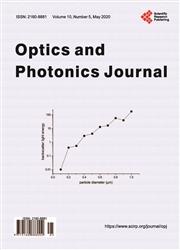Application of Vacuum Photoelectric Detection Technology in Super-Resolution System
引用次数: 0
Abstract
Due to the wave characteristics of light, diffraction occurs when the light passes through the optical system, so that the resolution of the ordinary far-field optical system is limited by the size of the Airy disk diameter. There are various factors that cause image quality degradation during system detection and imaging, such as optical system aberrations, atmospheric inter-ference, defocusing, system noise and so on. Super-resolution optical imaging technology is the most innovative breakthrough in the optical imaging and detection field in this century. It goes beyond the resolution limit of ordinary optical systems or detectors, and can get more details and information of the structure, providing unprecedented tools for various fields. Compared with ordinary optical systems, super-resolution systems have very high requirements on the signals to be detected, which cannot be met by ordinary detection techniques. Vacuum photoelectric detection and imaging technology is equipped with the characteristics of high sensitivity and fast response. It is widely used in super-resolution systems and has played a great role in super-resolution systems. In this paper, the principles and structure of the image-converter streak camera super-resolution system, scanning electron microscopy super-resolution system and laser scanning confocal super-resolution system will be sorted out separately, and the essential role of the vacuum photoelectric detection technology in the ultra-microscopic sys-tem will be analyzed.真空光电检测技术在超分辨系统中的应用
由于光的波动特性,当光穿过光学系统时会发生衍射,因此普通远场光学系统的分辨率受到艾里盘直径大小的限制。在系统检测和成像过程中,导致图像质量下降的因素多种多样,如光学系统像差、大气互差、散焦、系统噪声等。超分辨率光学成像技术是本世纪光学成像和检测领域最具创新性的突破。它超越了普通光学系统或探测器的分辨率限制,可以获得更多的结构细节和信息,为各个领域提供了前所未有的工具。与普通光学系统相比,超分辨率系统对待检测信号的要求非常高,这是普通检测技术无法满足的。真空光电检测成像技术具有灵敏度高、响应快的特点。它被广泛应用于超分辨率系统,并在超分辨率系统中发挥了重要作用。本文将分别对图像转换条纹相机超分辨率系统、扫描电子显微镜超分辨率系统和激光扫描共焦超分辨率系统的原理和结构进行梳理,并分析真空光电检测技术在超显微系统中的重要作用。
本文章由计算机程序翻译,如有差异,请以英文原文为准。
求助全文
约1分钟内获得全文
求助全文

 求助内容:
求助内容: 应助结果提醒方式:
应助结果提醒方式:


